Fossil Hunting Around The City
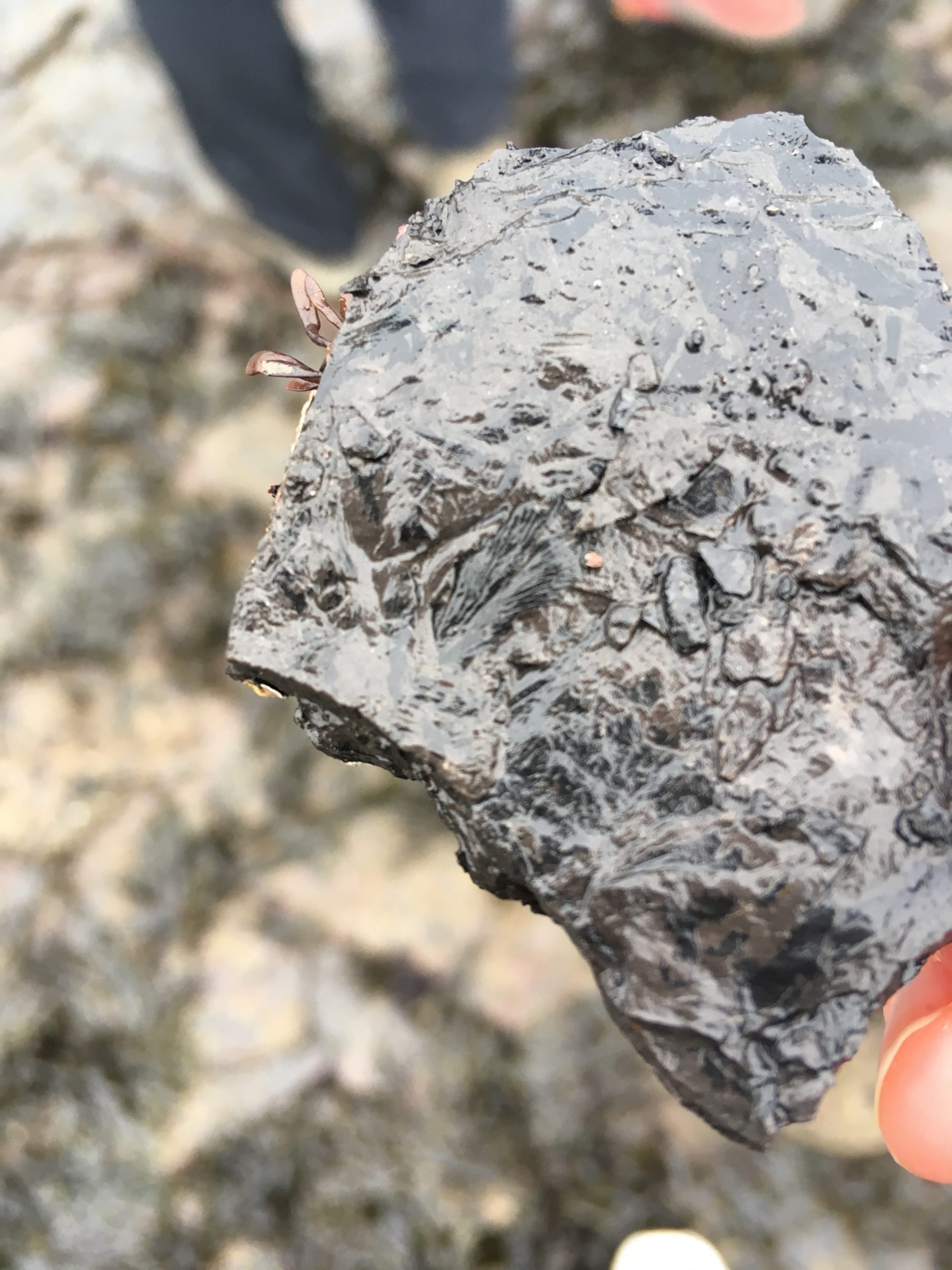
By Molly, BSc Geology and Physical Geography
One thing I’ve missed during lockdown is being able to go fossil hunting. It’s always interesting to find a fossil and learn more about the geology of the place you are exploring. Edinburgh is a great place for exploring, with so many landmarks and sights to see, but did you know you can find fossils around the City?
Edinburgh has a rich geological history, with volcanism forming Arthur’s Seat and Castle Rock, Old Red Sandstones, and oil shale deposits, ranging from the Devonian to the Carboniferous.
If you’re looking for something new to do during lockdown, here are some areas around Edinburgh where you can find fossils where you might not have thought to look. While you can find In-situ fossils at some sites, many of the building stones of Edinburgh contain some interesting fossils which are worth noting: ammonites can be found in the building stones on New Street, and Jurassic bivalves can be seen on the ramp of the Main Library in central campus.
Wardie Beach
In the north of Edinburgh in Granton is Wardie Bay. On the shore are exposed members of the Carboniferous Oil-Shale group found in Edinburgh Lothian and Fife. During this period, This area would have been a freshwater lake, with influences from the sea, resulting in a range of both marine and non marine fossils. Plant fossils in the Wardie Shales can be up to 1m long, of trees from the Carboniferous that had likely fallen into the lake. These trees grew up to 60m tall, and you can find roots and the bark within the shales. If you’ve got a keen eye, you might also spot some seed ferns up to 1cm fossilised in the shales. Splashing some water on the rock and shining a light will help you to find smaller plants more easily. The Wardie Shales also contain coprolites (fossilised droppings) from sharks and fish. Sometimes fossil fish are found within hard nodules, but many of these have been donated to the National Museum of Scotland. This is a Site of Special Scientific Interest, so please do not damage the exposures if you plan to visit.

Seed Fern Fossils at Wardie Beach
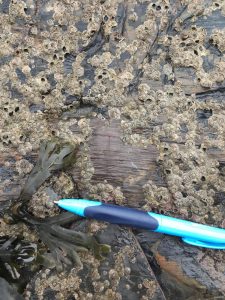
Image of Fossil Tree bark at Wardie Beach.
St. Anthony’s Chapel, Holyrood Park
Holyrood Park is the perfect place to really appreciate the geology of Edinburgh, and is located right in the city centre. The ruined chapel can be found above St Margaret’s Loch to the North of the park. Beneath the ruins lies a small ledge on the cliff facing west. This is an ash deposit between two layers of lava. On the exposed part of the ledge, you can find plant fossils, that had been coalified, likely because of forest fires due to the volcanism occurring here during the Carboniferous. Above the plant fossils in the ash, is a geode of jasper, which is known to be found in the park, however collection is prohibited. In the lava flow beneath the ash, if you look in the crevasses you can find calcite crystals that are bright white.
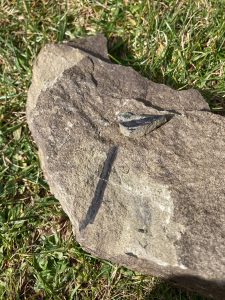
Coalified Plant fossils at St. Anthony’s Chapel
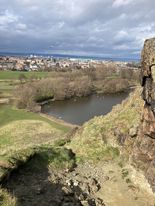
You can find the Fossils on this cliff face beneath St. Anthony’s Chapel
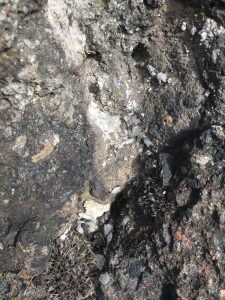
White calcite crystals found near St. Anthony’s chapel
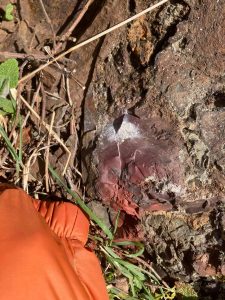
Geode near St. Anthony’s Chapel
Paving Stones, City Centre.
If you’ve ever taken a stroll through Edinburgh’s city centre, there’s a good chance you’ve trodden on some fossils. The paving stones of Edinburgh are made of the Devonian Caithness Flagstone, which was part of a gigantic lake system known as Lake Orcadie, which spanned across the North East of Scotland. The flagstone is filled with fossil fish such as primitive lung fish, lobe-finned fish and armoured fish. Even with all of Edinburgh’s foot traffic, these are relatively well preserved. These can be found on the paving stones outside Chamber Street Museum and can be 15-20cm long! Even when the museum is closed, there’s still something cool to see!
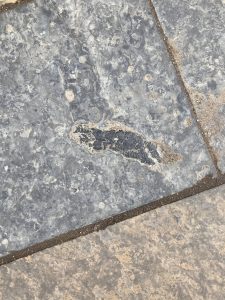
Fossil Fish outside Chamber St Museum
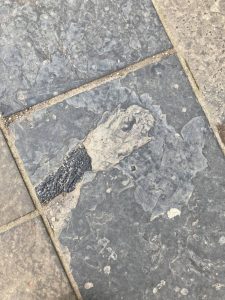
Another fossil fish found in front of the museum, you can still see the scales!
As you can see, fossils can be found in many unexpected places throughout the city. If you find a fossil around Edinburgh that you don’t see mentioned here, feel free to let us know. happy fossil hunting!
If you would like to know more about fossil hunting around Edinburgh, You can check out the Lothian Geology: An Excursion Guide by McAdam and Clackson:
http://earthwise.bgs.ac.uk/index.php/Lothian_Geology:_an_excursion_guide
Follow us on Instagram or Twitter for more updates from our Geosciences students!



